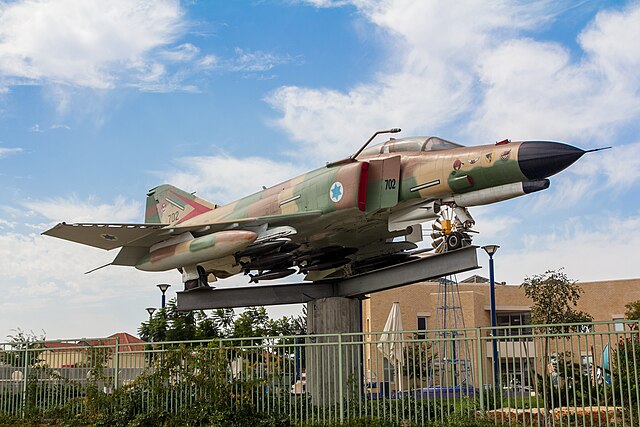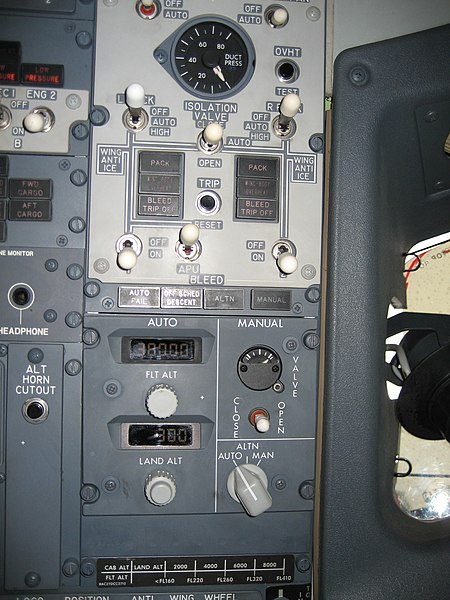Components of jet engines
This article briefly describes the components and systems found in jet engines.
Thin rounded intake lip
F-4 Phantom showing fixed front ramp, ref "702", and moveable rear ramp
The 17-stage axial compressor on the General Electric J79. Air moves from left to right. Each compressor stage is a row of rotor blades which give the air tangential velocity followed by a stationary row of stator blades which slow the air and raise its static pressure. The top casing holding the stators has been removed to show the rotor blades. Visible on the bottom casing are the actuating levers for the six stages of variable stators. The blades and air passage get smaller from left to right because the volume of each pound of air gets smaller as the air is compressed from 1 atmosphere to 12.

Combustion liners in GE J79. The top outer combustion casing has been removed. Air from the compressor moves from left to right. Some enters the liner at the left where the fuel nozzle is located. The remaining air passes along the outside of the liner and enters the holes downstream of the primary zone to complete the combustion and dilute combustion products to a temperature acceptable to the turbine first stage nozzle guide vanes visible at the right. Two of the liners have spark plugs and during a start the remaining eight are ignited through cross-fire tubes which link all the liners. One tube is just visible between the lower and middle liners.
Bleed air in aerospace engineering is compressed air taken from the compressor stage of a gas turbine, upstream of its fuel-burning sections. Automatic air supply and cabin pressure controller (ASCPC) valves bleed air from low or high stage engine compressor sections; low stage air is used during high power setting operation, and high stage air is used during descent and other low power setting operations. Bleed air from that system can be utilized for internal cooling of the engine, cross-starting another engine, engine and airframe anti-icing, cabin pressurization, pneumatic actuators, air-driven motors, pressurizing the hydraulic reservoir, and waste and water storage tanks. Some engine maintenance manuals refer to such systems as "customer bleed air".
Cabin pressure and bleed air controls in a Boeing 737-800





